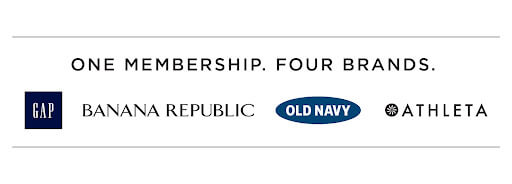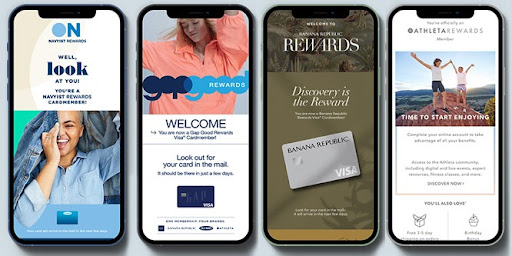We’ve entered the era of the empowered consumer, and with loyalty programs, that means interconnected experiences are more important than ever. Shoppers want to earn, redeem, and refer with ease; they want every touchpoint to feel frictionless.
For some enterprise businesses, this means closing the gap between customers’ favorite brands and adopting a multi-brand loyalty strategy. According to FIS, 81% of consumers around the world stated that it would be helpful to have the ability to earn and redeem points at multiple types of retailers. Businesses using a multi-brand loyalty strategy can deliver the experiences customers expect while also increasing their share of wallet.
What is a multi-brand loyalty program?
Brands under the umbrella of a shared parent company create an end-to-end loyalty experience while centering customer convenience.
What does multi-brand loyalty offer loyalty members?
Shoppers can earn and redeem points from any company in the ecosystem. No matter how they spend, members can use their points as they see fit. Shoppers enjoy more diverse redemption options, faster reward advancement, and a simple way to connect with their favorite brands.
What does multi-brand loyalty offer brands?
A multi-brand loyalty program offers brands a unified approach to customer rewards and incentives. The strategy encourages cross-vertical shopping, ultimately keeping share of wallet within the brand ecosystem. Rather than seek out alternative companies for their shopping, members will redirect their spend where they gain the most value: your loyalty program.
Take Gap Inc.’s new multi-brand loyalty program: One Membership. Four Brands. Loyalty members can earn and redeem rewards at Gap, Banana Republic, Old Navy, and Athleta, effectively integrating the brands’ previous programs into one point of contact.


“Our goal is to turn our customers into lifelong loyalists by reimagining our Rewards program and creating unique, personalized experiences that will make it easier to shop, earn and redeem rewards across our family of brands,” said John Strain, Chief Customer, Digital and Technology Officer at Gap Inc.
What multi-brand loyalty can do for your enterprise business
Enterprise brands can propel revenue growth and reach new audiences with a multi-brand loyalty program.
Here’s how:
Increase your share of wallet
Multi-brand loyalty programs leverage their members’ shared interests and present a highly effective cross-marketing strategy. The parent company drives revenue because they’re expanding brand reach across several verticals. Who stands to gain? Everyone.
Key Rewards, a multi-brand loyalty program under Williams-Sonoma, Inc., exposes shoppers to their company ecosystem and drives brand loyalty in several verticals. For example, West Elm furniture enthusiasts can also earn and redeem rewards with Williams-Sonoma, a high-end kitchenware brand. These complimentary verticals share a similar customer base — affluent consumers — and don’t directly compete with one another.


By encouraging customers to shop within your multi-brand loyalty program, you’re also overcoming vertical-specific purchase cycles. Verticals with long paths to purchase — think home and electronics — are balanced by their shorter counterparts, like fashion.
Deepen your existing customer profiles
Loyalty offers brands a clear-cut way to collect customer data. Email sign-ups, SMS sign-ups, demographic information, product preferences, purchase history — all can be collected by offering captivating perks and rewards. With a multi-brand program, your customer profiles can become even richer.
The loyalty ecosystem allows brands to share customer information amongst themselves. As a result, you gain access to data regarding shoppers’ cross-vertical product consumption and purchase behavior. Plus, data-rich customer profiles are key to developing an effective segmentation strategy.
Create even better customer experiences
There should be foundational infrastructure across your brands before building a multi-brand loyalty program. Your customers’ experiences should be seamless, rather than feeling like disjointed, individual programs. To ensure your multi-brand strategy succeeds, it’s important that all brands involved are aligned and have adopted a shared strategy.
Customers want bespoke, captivating experiences, and a loyalty program delivers just that. Using the data you’ve collected across brands, you can deliver hyper-relevant product recommendations, experiential rewards, discount offers, and more — all tailored to customers’ multi-vertical interests.
Multi-brand loyalty vs. loyalty coalitions
Multi-brand loyalty isn’t a new concept; brands have been using this cross-vertical marketing strategy for years. But, a multi-brand loyalty program should not be confused with a loyalty coalition. Loyalty coalitions do not share a parent company, and historically, they’ve failed for this very reason. Without a shared parent company, these programs don’t effectively mitigate risk. Let’s break down why.
Customers can purchase multiple times at one brand but only redeem rewards at another, resulting in no real way to predict potential liability. With multi-brand loyalty, the parent company takes on the collective risk of its subsidiaries.
And, loyalty coalitions have failed because they lacked a common thread between the brands’ customer bases. In effect, brands exposed themselves to shoppers fundamentally uninterested in their products.
Multi-brand loyalty programs are here to stay
Multi-brand loyalty programs are the next step in delivering rewarding loyalty experiences to your best customers. These ecosystems successfully create one point of contact with customers’ favorite brands, boosting program engagement and reward redemption. See how you can implement a multi-brand loyalty program by requesting a demo.



